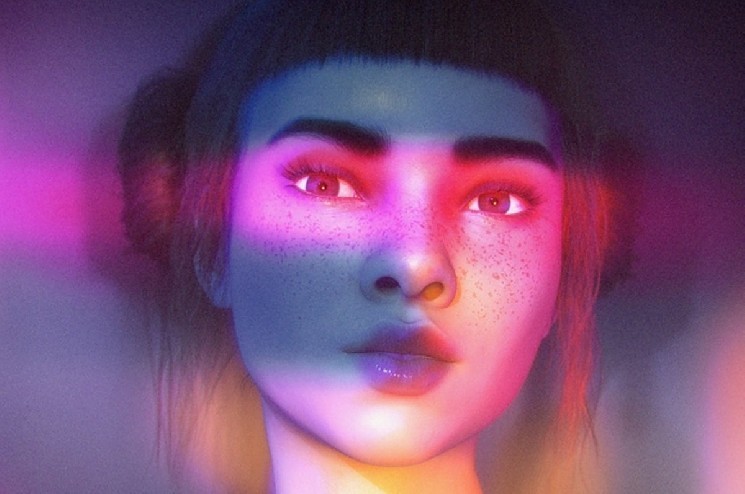Virtual Humans: The Next Frontier Of The Metaverse

Virtual humans can seem like a sci-fi concept, but they’re quickly becoming a reality. From digital assistants to chatbots, these avatars are beginning to play an important role in our lives. However, as technology advances and mainstream acceptance of virtual humans grows, we’re beginning to see them take on more influential roles.
What Are Virtual Influencers?
A new type of influencer called, “virtual influencers” also known as VIs have started to gain popularity. VIs are digital characters that are designed to look and act like real people. Unlike traditional social media influencers, who are real people with a large following on social media, virtual influencers are entirely digital creations.
While they may not be real people, VIs can have just as much influence as any human influencer. This is because they are often designed to appeal to a specific demographic or target audience, and they can be used to promote products and brands in a way that is more authentic and relatable than traditional advertising.
What’s more, virtual humans are not just restricted to social media. As the metaverse continues to develop, its role is only going to become more important.
In the not-too-distant future, virtual humans could very well be the next frontier of the metaverse.
Creative Property Rights: Are Virtual Influencers Something New?
Although the technology needed to create an immersive virtual human is only now starting to become available, the concept of virtual humans is not new. In fact, it has been around for decades in the form of creative property rights.
Fictional characters such as Barbie, Minnie Mouse, and the GEICO Gecko have long influenced buying decisions and culture, and as digital avatars, they are the predecessors of today’s virtual influencers.
As we move forward into a new age of digital consumption, each of these VIs has taken a page out of the most popular influencer’s book by creating content such as Vlogs and other social media content. Although these recognizable characters are fictional, the intent is to create their story as if they are real people. This will enable them to interact with fans in a more personal way.
The Next Stars Will Have No Limitations
Through their own social media channels, virtual influencers can connect with their fans in a way that traditional celebrities and influencers cannot. This is because they are not bound by the same limitations as real people. For example, they can be available 24/7, they can exist in multiple places at once, and their fans can interact with them on a deeper level.
The sky’s the limit for what virtual influencers can do, and as they become more realistic and lifelike, their potential is only going to grow. So, it’s safe to say that we’ll be seeing more of them in the years to come. Whether they be human-like, an alien life form, robotic, or anything the imagination can manifest, virtual influencers are the future of influence.
Which is probably why Web3 music-tech companies like Hume have just successfully raised nearly $12 million to build out their collection of virtual musical ‘metastars,’ led by their main character @angelbaby.
im going LIVE on a twitter space for the 1st fxckin time ?
FRIDAY OCTOBER 7TH at 12:30pm pt
i better see every fxckin 1 of u in the audience ?
⬇️ SET A REMINDER: https://t.co/kOcbLrnTj7 pic.twitter.com/HWyiPw1GBr
— angelbaby3045.eth ? (@angelbaby) September 23, 2022
Case study: Lil Miquela
Lil Miquela is an example of a virtual influencer success story. As a “robot” living among us, Miquela Sousa is a famous musician with popular hits on Spotify and has hit collaborations with other indie stars.
In addition to her musical success, by blending in with human celebrities, she has been able to model for Brandy Melville and Calvin Klein to earn a living. She’s also not afraid to become vocal about her passions as an activist by speaking out about social injustice.
With over 3 million followers on Instagram and a successful music career, Lil Miquela is one of the most popular virtual influencers today, even making it on the list of TIME Magazine’s ’25 Most Influential People on the Internet’.
Although her viral presence is due in part to her ability to relate to human issues, it’s also because she is backed by some of the most known VC firms in the industry. With an investment of $30 million from Spark Capital, Sequoia Capital, M Ventures, BoxGroup, Chris Williams, Founders Fund, and WME at a valuation of $125 million, it’s clear that her PR firm ‘Huxley’ will have a large budget to continue to promote her as a virtual human influencer.
You don’t wanna know how robots digest kale ? pic.twitter.com/lhuEJPnnyd
— lil miquela (@lilmiquela) September 10, 2022
Virtual Influencers Will Help Onboard New Users To The Metaverse
For most people, being completely immersed in the metaverse can be an overwhelming experience. Even with early technologies that are not as immersive as they will be in the future, users can get disoriented and lost.
The intense blend between realities can be shocking for some as we have all seen the intense reactions from people playing horror games in virtual reality. It can be a very surreal experience.
To help people get acclimated and onboarded to the metaverse, virtual influencers serve as guides between traditional forms of media and the metaverse. It can be easier to get along with the idea of fictional characters behaving no differently than real people through virtual influencers promoting their lifestyles on recognizable channels such as YouTube, Twitter, and Instagram.
Although the technology used to create virtual influencers has mostly been used by tech enthusiasts and brands with large budgets, it goes to show that anyone can begin creating alternative versions of themselves in the metaverse.
The Benefits of Virtual Influencers For Brands
There are a few key benefits that virtual influencers offer for brands. First, they can be more cost-effective than traditional human influencers. This is because they don’t require the same costs associated with things like travel and accommodation.
Second, they are not subject to the same liability risks as real people. This is because they are not human and therefore cannot be held responsible for their actions in the same way that a real person can. This results in a higher degree of control for brands.
Virtual influencers can be more consistent than real people. This is because they are not subject to the same mood swings, emotions, or physical limitations as humans. This means that they can provide a higher level of service and promote brands more consistently.
Virtual Influencers Are Releasing NFTs
Many of the top virtual influencers have also started to release non-fungible tokens or NFTs. As a “Blockster” you are likely already well aware of what NFTs are so let’s explore what this means for virtual influencers.
Many virtual influencers are releasing NFTs as a way to monetize their influence. This is because they can sell NFTs for cryptocurrency, which can then be used to fund their continued development. Additionally, it allows them to have a direct relationship with their fans, as they are the ones who are purchasing the NFTs.
This is a big development as it opens up a whole new world of possibilities for virtual influencers. For example, they could use NFTs to sell virtual goods, experiences, or even access to exclusive events. We’ve seen this with WADE, a virtual influencer with superpowers, a love for fashion, and a creative and fluid instinct that’s not bound to the physical world.
CONGRATULATIONS to the @Trust_Labs_ family and @Simpl3r_BH MINTING TODAY ?
Happy to see the alliance grow and prosper!#StayWavy ?? pic.twitter.com/KYWb96s6lB
— WADE: Friends & Family | SOLD OUT (@Worldwide_Wade) September 16, 2022
Final Thoughts
As you can see, the convergence of technologies to create new realities is happening in real-time. Through a multitude of technologies such as motion capture, 3D computing, and artificial intelligence, we are seeing a new form of digital life emerge before our eyes. However, it does not stop there.
The blockchain enables virtual influencers to connect with fans in an even more personal way. Through verifiable ownership with NFTs, creative rights can be shared and exchanged in a way that was not possible before.
We are at the beginning of a new era where the lines between what is real and what is virtual will become increasingly blurred. It’s an exciting time to be alive and through NFTs, virtual influencers are leading the charge in shaping not just the metaverse, but also the global adoption of blockchain technology.






 Bitcoin
Bitcoin  Ethereum
Ethereum  Tether
Tether  USDC
USDC  TRON
TRON  Dogecoin
Dogecoin  Cardano
Cardano  Bitcoin Cash
Bitcoin Cash  Chainlink
Chainlink  Monero
Monero  LEO Token
LEO Token  Zcash
Zcash  Stellar
Stellar  Litecoin
Litecoin  Hedera
Hedera  Dai
Dai  Cronos
Cronos  Tether Gold
Tether Gold  OKB
OKB  Ethereum Classic
Ethereum Classic  KuCoin
KuCoin  Gate
Gate  Algorand
Algorand  Cosmos Hub
Cosmos Hub  VeChain
VeChain  Tezos
Tezos  TrueUSD
TrueUSD  Dash
Dash  Stacks
Stacks  IOTA
IOTA  Decred
Decred  Basic Attention
Basic Attention  Theta Network
Theta Network  NEO
NEO  Synthetix
Synthetix  Qtum
Qtum  Ravencoin
Ravencoin  DigiByte
DigiByte  0x Protocol
0x Protocol  Nano
Nano  Zilliqa
Zilliqa  Siacoin
Siacoin  Numeraire
Numeraire  Waves
Waves  BUSD
BUSD  Status
Status  Enjin Coin
Enjin Coin  Pax Dollar
Pax Dollar  Ontology
Ontology  Lisk
Lisk  Hive
Hive  Steem
Steem  Huobi
Huobi  NEM
NEM  OMG Network
OMG Network  Bitcoin Gold
Bitcoin Gold  Augur
Augur  HUSD
HUSD